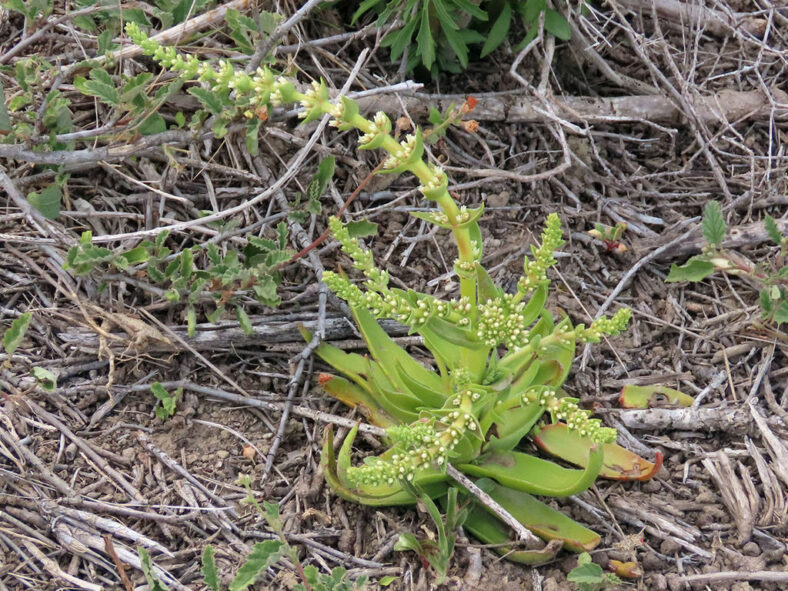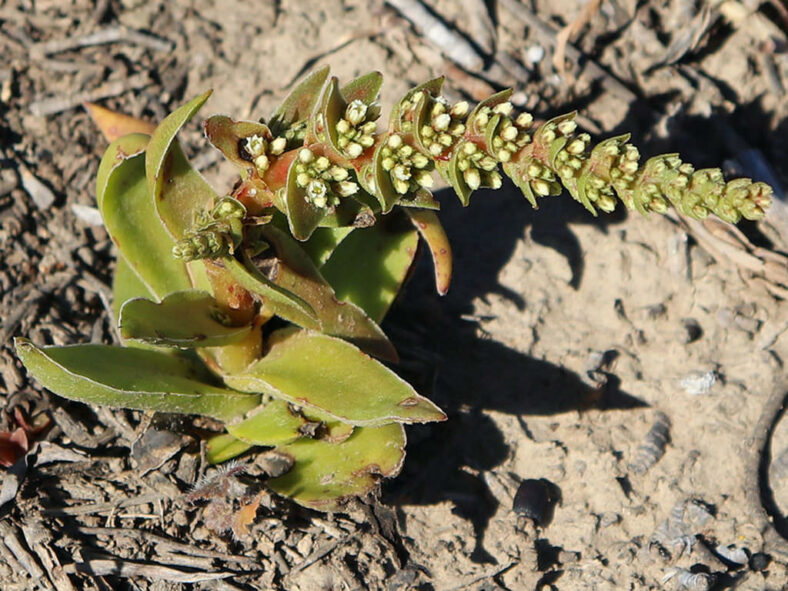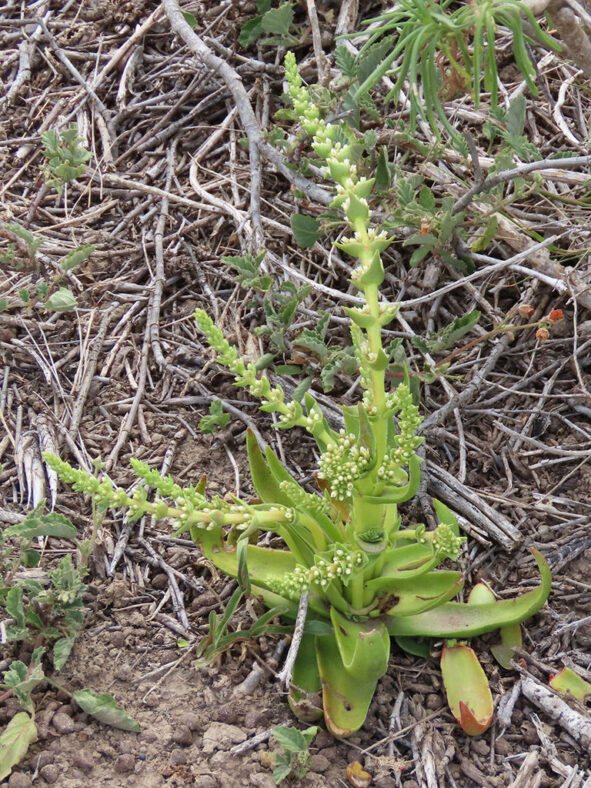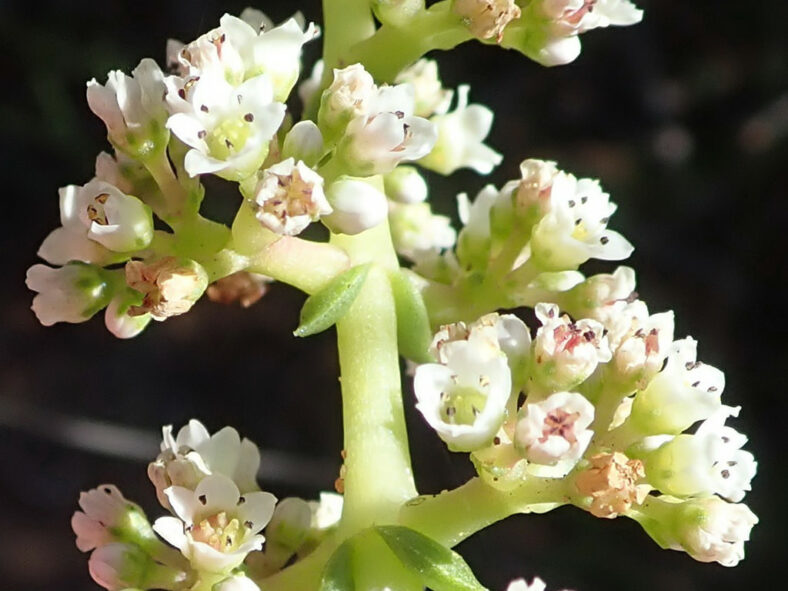Crassula capitella has five subspecies. Crassula capitella subsp. capitella is usually biennial, lacks a tuberous base, and has one basal rosette that produces flowers in a spike-like inflorescence.
Scientific Name
Crassula capitella Thunb.
Common Name(s)
Campfire Plant, Saint Andrew's Cross, Red Flames
Synonym(s)
Turgosea capitella
Scientific Classification
Family: Crassulaceae
Subfamily: Crassuloideae
Genus: Crassula
Etymology
The specific epithet "capitella" (pronounced "kap-ih-TEL-uh") means "small head" and possibly refers to the size of the rosette of this species.
Origin
Crassula capitella is native to southern Africa. It occurs in all the provinces of South Africa, Botswana, and northern Namibia. Crassula capitella subsp. capitella grows on dry slopes rarely associated with rock outcrops from the Free State through the Eastern Cape and Northern Cape to near Ladismith in the Western Cape province.
Description
Crassula capitella is a small succulent plant that forms a solitary basal rosette of fleshy leaves that vary in shape from linear–lanceolate to elliptic or rarely obovate. Typically, it is a biennial plant, rarely perennial, with a smooth stem or occasionally a few recurved hairs. The leaves are green, often with a red tinge or spots, and can measure up to 4 inches (10 cm) in length and 1.4 inches (3.5 cm) in width. They are smooth or have few recurved hairs and often have recurved marginal cilia.
From mid-summer to fall, Crassula capitella produces small, tubular flowers with cream to white petals in a spike-like thyrse. The inflorescence is unbranched or sometimes branched from the base, with sessile dichasia and glabrous bracts.

Subspecies Crassula capitella
- Crassula capitella subsp. capitella
- Crassula capitella subsp. meyeri
- Crassula capitella subsp. nodulosa
- Crassula capitella subsp. sessilicymula
- Crassula capitella subsp. thyrsiflora
Cultivars of Crassula capitella
How to Grow and Care for Crassula capitella
Light: Crassula capitella prefers full sun to partial shade. However, avoid intense afternoon sun during the hot summer days, as it can burn the leaves. If growing the plant indoors, place it in a window with at least 6 hours of direct sunlight.
Soil: This plant is not particular about soil pH, but it does require very porous, well-draining soil. You can use commercial soil mix for succulents or create your own.
Temperature: While this succulent can tolerate average summer temperatures and short-term freezing, extreme cold or heat can cause it to lose leaves and even die. Crassula capitella grows best in USDA Plant Hardiness Zones 9b to 11b, with average minimum winter temperatures ranging from 25°F to 50°F (-3.9°C to 10°C).
Watering: To keep the plant healthy, avoid overwatering by using the "soak and dry" method. Water deeply and then let the soil completely dry out before watering again. Reduce watering in winter. Potted plants require more frequent watering than those in the ground.
Fertilizing: While Crassula capitella does not require high levels of nutrients, it will benefit from a small amount of organic fertilizer in mid-spring when it starts actively growing.
Repotting: Repot the plant as needed, preferably in spring, at the beginning of the growing season. Make sure the soil is dry before beginning to repot.
Propagation: This plant is usually propagated by leaves and stem cuttings. Using leaves is the easiest method, but stem cuttings produce larger plants more quickly. It can also be grown from seeds. The best time for propagation by cuttings is at the beginning of the growing season, while spring and summer are ideal for sowing the seeds.
Learn more at How to Grow and Care for Crassula.
Toxicity of Crassula capitella
Crassula capitella is considered non-toxic and is safe for growing around children and pets.
Links
- Back to genus Crassula
- Succupedia: Browse succulents by Scientific Name, Common Name, Genus, Family, USDA Hardiness Zone, Origin, or cacti by Genus
Photo Gallery
Click on a photo to see a larger version.


